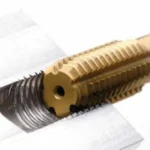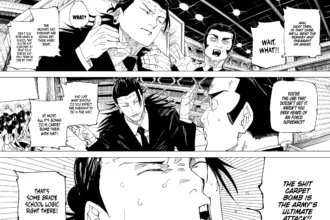Introduction to rear main seal leak
When it comes to vehicle maintenance, some issues can sneak up on you like a shadow in the night. One such culprit is a rear main seal leak. This seemingly minor problem can lead to significant consequences if left unchecked. As your engine runs, oil circulates throughout its components, ensuring everything operates smoothly. The rear main seal plays a crucial role in keeping that oil contained within the engine block and preventing leaks.
If you’ve noticed unusual spots under your vehicle or have concerns about fluid loss, you might be dealing with this frustrating issue. Understanding how to identify a rear main seal leak is essential for every car owner who wants to keep their ride running efficiently and avoid costly repairs down the line. Let’s dive into what exactly a rear main seal is and how you can spot potential leaks before they become major headaches!
What is a Rear Main Seal?
The rear main seal is a crucial component of an engine’s internal structure. Located at the back of the engine, it serves as a barrier between the crankshaft and the transmission.
This small but significant part prevents oil from leaking out while allowing the crankshaft to rotate freely. It plays a vital role in maintaining proper oil pressure within your engine.
Typically made from rubber or composite materials, this seal can wear down over time due to factors like heat and vibration. When it fails, you might start noticing oil puddles beneath your vehicle.
Understanding its function underscores why regular maintenance is essential for optimal performance and longevity. Keeping an eye on this unassuming part could save you from costly repairs down the line.
Signs of a Rear Main Seal Leak
Detecting a rear main seal leak early can save you from costly repairs down the road. Keep an eye out for certain signs that could indicate trouble.
One of the most noticeable symptoms is oil pooling under your vehicle. If you find dark, viscous spots on your driveway or garage floor, it’s worth investigating further.
Another red flag is low engine oil levels. If you’re frequently topping off your oil, this might point to a leaking seal. Additionally, watch for unusual engine noises; if the motor sounds rough or has excessive vibration, it may be struggling due to lack of lubrication.
You may also notice an oily residue around the bell housing area where the transmission meets the engine block. This buildup can hint at a problematic rear main seal as well.
Stay vigilant and keep track of these indicators to ensure your vehicle runs smoothly.
Causes of Rear Main Seal Leaks
Several factors can contribute to a rear main seal leak. One common cause is the natural wear and tear that occurs over time. As vehicles age, seals can dry out, crack, or become brittle.
Another significant factor is engine overheating. Excessive heat can lead to the expansion of components, which may compromise the seal’s integrity. Oil contamination also plays a role; dirty oil can break down rubber seals more quickly than clean oil.
Improper installation during repairs or maintenance might create gaps where leaks can occur. Additionally, using incorrect oil viscosity can affect how well the seal functions and increase the risk of failure.
Excessive engine vibrations from worn mounts may weaken the seal over time, leading to potential leaks. Addressing these issues early on helps prevent further damage and costly repairs down the road.
How to Check for a Rear Main Seal Leak
To check for a rear main seal leak, start by inspecting the area underneath your vehicle. Look for any signs of oil pooling or drips on the ground. This is often the first indication that something might be wrong.
Next, raise your car safely using jack stands to get a better view of the engine’s underside. Check around the transmission and where it connects to the engine block. Oily residue in this area can suggest a rear main seal leak.
Another useful method involves checking your dipstick and oil level frequently. If you notice that you’re losing oil faster than usual without visible leaks elsewhere, it could hint at a problem with your rear main seal.
Consider monitoring for strange smells or smoke coming from under your hood while driving, as burning oil can indicate an active leak near this crucial component.
Repairing a Rear Main Seal Leak
Repairing a rear main seal leak can be a challenging task. It often involves significant labor because of the seal’s location at the back of the engine.
To fix it, you generally need to remove the transmission and possibly other components, which can lead to increased costs.
Once you have access, replacing the old seal with a new one is essential. Ensure that all surfaces are cleaned thoroughly before installation.
In some cases, if you’re dealing with minor leaks, there are additives available that claim to rejuvenate seals. However, this is more of a temporary solution rather than a permanent fix.
For many car owners, seeking professional help might be wise. An experienced mechanic has tools and expertise for an effective repair procedure while minimizing any potential damage to your vehicle’s engine or transmission system.
Preventing Rear Main Seal Leaks
Preventing rear main seal leaks involves regular maintenance and careful driving habits. Start by scheduling routine oil changes, as clean oil helps keep seals lubricated and functioning properly.
Using the correct type of engine oil is crucial. Refer to your vehicle’s manual for specifications on viscosity and additives that suit your engine’s needs.
Monitor your vehicle’s temperature closely. Overheating can cause wear and tear on seals, leading to potential leaks.
Tread lightly when accelerating or decelerating sharply. Gentle driving reduces stress on engine components, including the rear main seal.
Inspect for signs of other fluid leaks around the transmission area regularly. Catching issues early can prevent bigger problems down the road. Prioritize these practices to extend the life of your rear main seal and maintain optimal vehicle performance.
Conclusion
Detecting a rear main seal leak early can save you from costly repairs down the road. Being aware of the signs and causes is essential for every vehicle owner.
Regular maintenance checks play a crucial role in preventing these kinds of leaks. Always stay attuned to your car’s performance and any unusual changes.
Should you suspect an issue, don’t hesitate to consult a professional mechanic. Timely intervention can prevent further damage and ensure your vehicle runs smoothly.
Educate yourself about your vehicle’s components, including the rear main seal. Knowledge empowers you as a driver and helps keep your investment secure.
Taking proactive measures goes a long way in extending the life of your engine while enhancing safety on the road.
FAQs
Understanding a rear main seal leak is crucial for any vehicle owner. Here are some frequently asked questions to clarify common concerns.
What does a rear main seal do?
The rear main seal serves as a barrier between the engine and the transmission. It keeps oil from leaking out, ensuring that your engine runs smoothly.
How can I tell if my car has a rear main seal leak?
Look for signs like oil spots under your vehicle, increased oil consumption, or visible leaks around the bell housing area of the transmission.
Can I drive with a rear main seal leak?
While it’s technically possible to drive with this type of leak, it’s not advisable. Continuing to operate your vehicle may lead to more severe damage and costly repairs.
Are all vehicles prone to rear main seal leaks?
Most vehicles have a rear main seal; however, factors such as age, mileage, and maintenance play significant roles in their longevity.
What is the cost of repairing a rear main seal leak?
Repair costs can vary widely depending on make and model but expect labor-intensive work due to its location. It often ranges from $600 to $1,200 on average.
Can regular maintenance prevent these leaks?
Regularly changing oil and using quality lubricants can help minimize wear on seals over time. Keeping up with routine inspections also helps spot issues early before they escalate into major problems.
By staying informed about what causes and how to identify potential issues related to your vehicle’s performance—like those stemming from a faulty rear main seal—you’ll be better prepared for effective prevention and timely repair actions.

















